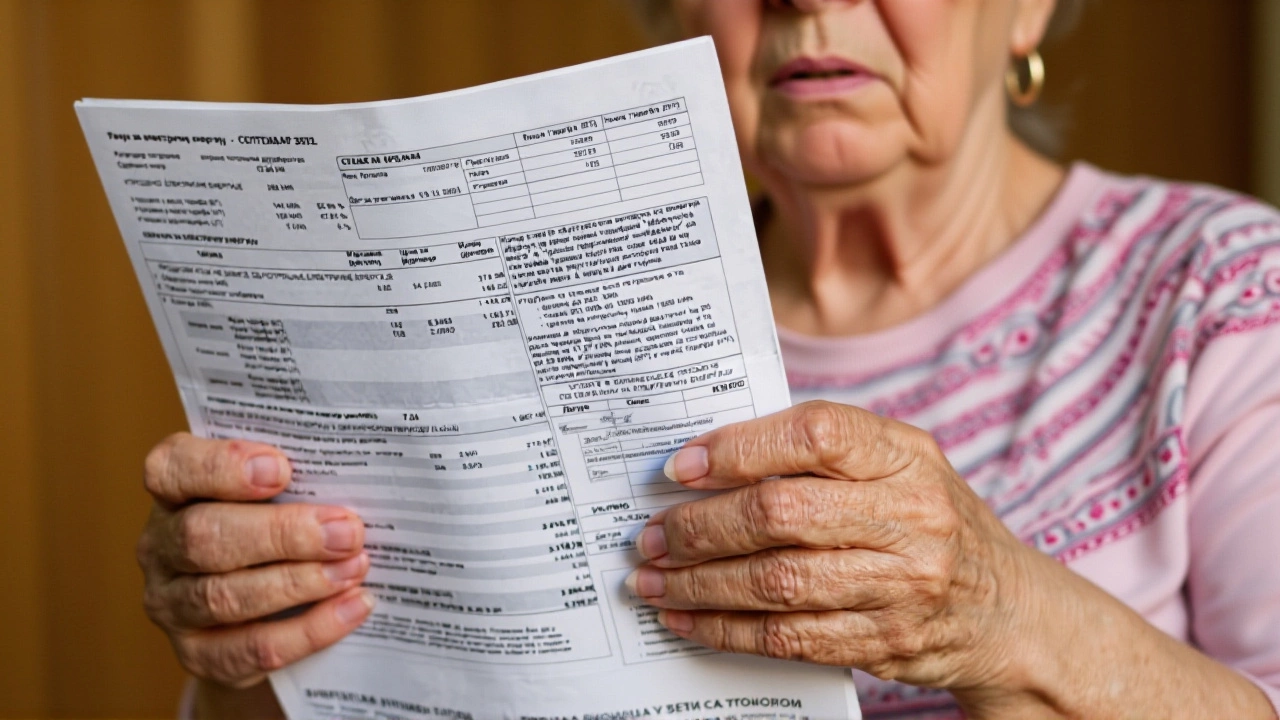
The UK’s annual inflation rate fell to 3.6% in October 2025 — the lowest in four months — signaling a possible turning point in the nation’s long battle with rising prices. The drop, confirmed by the Office for National Statistics on November 19, 2025, comes after three straight months of 3.8% inflation, and it’s the first time since November 2021 that core inflation has been this low. For millions of households still feeling the pinch, this isn’t just a number — it’s the first real sign that the cost of living crisis might be easing. The Bank of England had already hinted at this shift, declaring in its November 15 report that inflation "is judged to have peaked." Now, the data confirms it.
Energy Prices Lead the Decline
The biggest driver behind the drop? Energy. The Office of Gas and Electricity Markets adjusted its price cap in October 2025, slashing gas and electricity charges. As a result, housing and utilities inflation tumbled from 7.3% in September to just 5.2% — a nearly 30% drop in just one month. Gas prices alone fell from a 13% annual rise to 2.1%. Electricity followed suit, dropping from 8% to 2.7%. These aren’t minor fluctuations; they’re the kind of shifts that directly affect every household’s monthly bill. When energy costs slow, the whole inflation picture changes.Even more telling? The Consumer Prices Index (CPI), which excludes housing costs, also hit 3.6% — matching forecasts from analysts and the Bank of England. Meanwhile, the broader CPIH (which includes owner-occupier housing costs) edged down to 3.8%, from 4.1% the month before. Core CPIH — stripping out food, energy, alcohol, and tobacco — fell to 3.7%, its lowest since late 2021. That’s the real heartbeat of inflation: what’s left after the volatile stuff drops out.
Services and Wages: The Last Holdouts
But here’s the twist: services inflation, which includes haircuts, gym memberships, and dental care, remains stubbornly high at 4.5%. It’s down from 4.7% in September, but still above the Bank’s 2% target. Why? Because wages haven’t cooled as fast as prices. The Bank of England’s report points to "elevated labour cost growth," citing past wage hikes and higher employer National Insurance contributions as key factors. In simple terms: companies are still paying more to keep staff, and they’re passing that on. Food and beverage prices added another 0.4 percentage points to inflation — still a drag, but less than before.Some sectors are actually deflating. Furniture prices fell 0.3% in October, and transport costs dropped 0.6%. Meanwhile, communications — think mobile plans and broadband — surged 6.1%, showing how uneven the recovery is. The Producer Price Index held steady at 144.30, suggesting factories aren’t seeing new cost pressures. That’s a good sign for future inflation.

Bank of England Signals Shift
On November 15, just days before the ONS data dropped, four of the nine members of the Bank of England’s Monetary Policy Committee voted to cut the Bank Rate by 0.25 percentage points to 3.75%. That’s not a unanimous decision — but it’s a clear signal. The Bank didn’t just observe the data; it acted on it. "Beneath the headline numbers, underlying price and wage pressures have continued to ease," the report stated. That language matters. It’s not just about one month’s numbers — it’s about a trend. And it’s not just about inflation. It’s about confidence.Remember 2022? Between September and March 2023, the UK endured seven straight months of double-digit inflation, peaking at 11.1% in October 2022. Consumer prices rose over 20% in just three years. Back then, the energy price cap hit £3,549 per year. Today? It’s £1,277. That’s not just policy — it’s survival. And while 56% of households still say their cost of living is rising (up from 45% in July 2024), that’s down from the 72% peak in early 2023. Progress isn’t linear. But it’s happening.

What’s Next? The March 2026 Forecast
The Bank of England now projects inflation will fall to 3.2% by March 2026. Services inflation, still the biggest worry, is expected to dip to 4.3% by then — still above target, but moving in the right direction. Energy prices, the Bank notes, are "lower than ahead of the August Report," meaning the worst is behind us. If this trend holds, another rate cut in early 2026 is likely. And if it does, mortgage holders, small businesses, and savers will all feel the ripple.What’s clear now is this: the UK’s inflation story is no longer about panic. It’s about patience. The worst is over. But the recovery? That’s still being written.
Frequently Asked Questions
How does this affect mortgage holders?
With inflation falling and the Bank of England signaling potential rate cuts, variable-rate mortgage holders could see monthly payments drop as early as early 2026. Fixed-rate borrowers won’t benefit immediately, but when their deals expire, new rates are likely to be lower than the 5%+ levels seen in 2023. The Bank’s projection of 3.2% inflation by March 2026 suggests borrowing costs could ease significantly.
Why is services inflation still high?
Services inflation remains elevated because labour costs haven’t cooled enough. Many businesses, especially in hospitality and healthcare, still pay higher wages and National Insurance contributions from 2023–2024. These costs are baked into pricing, and service providers can’t easily automate or outsource like manufacturers can. That’s why haircuts, gym fees, and dental care still feel expensive — even as groceries and fuel get cheaper.
Is the cost of living crisis over?
Not entirely. While inflation has dropped sharply from 11.1% in 2022, 56% of UK households still report rising living costs as of December 2024. The crisis has shifted: energy bills are lower, but food, childcare, and insurance remain stubbornly high. The real test is whether wage growth keeps pace with these remaining pressures — and right now, it’s a close race.
What’s the difference between CPI and CPIH?
CPI measures inflation for a basket of goods and services, excluding housing costs. CPIH adds in owner-occupier housing costs — things like mortgage interest, property taxes, and maintenance. That makes CPIH a more complete picture of what households actually spend. In October 2025, CPI was 3.6%, while CPIH was 3.8%, showing housing still adds a small but meaningful drag to inflation.
Could inflation rise again in 2026?
It’s possible, but unlikely without a shock. The Bank of England expects energy prices to stay low, wage growth to moderate, and global supply chains to remain stable. However, a sudden spike in oil prices, a major strike in public services, or a weakening pound could push inflation higher. The key is whether the Bank can keep rates steady enough to avoid reigniting demand without letting unemployment rise.
What does this mean for savers?
Savers are finally seeing light at the end of the tunnel. With inflation falling and rates expected to drop slowly, savings accounts are no longer losing value as fast as they were. In 2023, real returns were deeply negative. Now, with inflation at 3.6% and rates at 3.75%, savers are close to breaking even — and if rates fall to 3.5% by mid-2026, real returns could turn positive for the first time since 2021.





